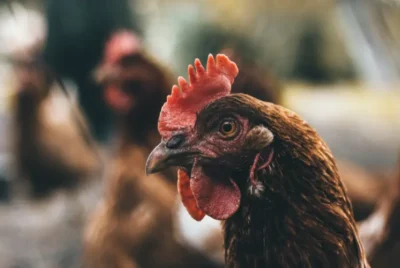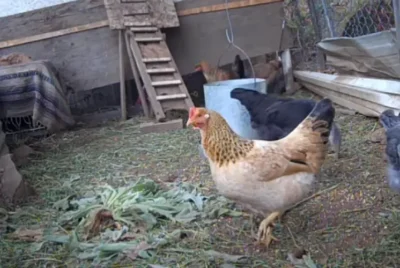A Detailed Profile of Black Copper Marans
Are you eager to get an in-depth understanding of the alluring Black Copper Marans? You might be drawn to their striking appearance and the unique dark chocolate-colored eggs they lay. However, acquiring a comprehensive profile and understanding the ins and outs of this breed is not always straightforward.
So in this article, we will provide a detailed profile for you to fully understand this breed and the unique beauty and appeal of the Black Copper Marans can be fully appreciated.
Overview of Black Copper Marans
- Suitable for Beginners: Absolutely.
- Average Life Expectancy: More than 8 years.
- Average Weight: Females (6.5lb) and Males (8lb).
- Coloration: Mixture of Black and Copper.
- Egg-Laying Rate: Roughly 3 weekly.
- Egg Color: Dark Brown or Chocolatey.
- Size of Egg: Large
- Broodiness: Average levels.
- Child-Friendly: Moderate.
- Chick Price: Ranges from $10 to $60 each.
- Primary Purpose: Egg production
- Level of Broodiness: Fairly Broody
- Can Tolerate Heat: Moderately well.
- Can Withstand Cold: Definitely.
- Comb Style: Single Comb
- Egg Yield: Approximately 150 to 200 eggs annually.
- Suitable for Backyards: Rated 4/5
Background and History of Black Copper Marans
Originating from Marans in France, Black Copper Marans are renowned for their striking black and copper plumage and unique dark chocolate-colored eggs. Initially bred for meat in the mid-19th century, their dark eggs soon captivated egg enthusiasts, leading to their recognition by the French Poultry Standard in 1931 and subsequent popularity across Europe and North America.
The original Marans, known as the “poule de Marans” and often referred to as “swamp chickens,” were significantly different from the nine varieties known today. Crossbreeding with gamecocks from Indonesia and India in the early 19th century led to the “Marandaise Fowl,” further refined through crossbreeding with Croad Langshan chickens to create today’s distinctive breed. Their popularity surged in the 1920s and 1930s, boosted further by author Ian Fleming’s attribution of the Black Copper Maran’s egg as James Bond’s favorite.
However, World War Two’s devastation nearly led to the breed’s extinction, saved only by a post-war breeding program initiated by the French Department of Agriculture. This program, through selective breeding, increased their egg production to about 200 eggs per year, ensuring the Black Copper Marans’ promising future.
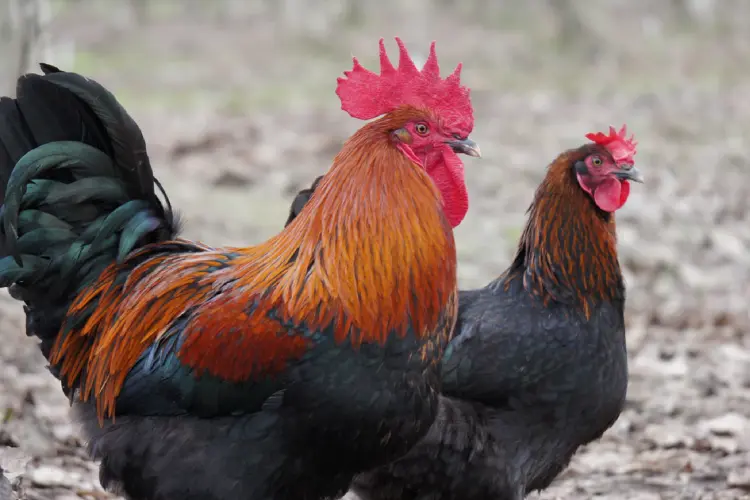
What is the Purpose of Black Copper Marans?
The primary purpose of Black Copper Marans is to produce dark chocolate brown eggs, which are highly valued for their unique and visually striking appearance. This breed is specifically bred and selected for its ability to lay eggs with deep, rich color, setting them apart from breeds that produce pale or white-shelled eggs.
While their egg-laying ability is the main purpose of breeding Black Copper Marans, they are also great for their meat. They have plump bodies and offer tender, flavorful meat, making them a dual-purpose breed suitable for those interested in egg production and meat consumption.
Additionally, they can be raised and exhibited as show birds. Their striking appearance, characterized by their black feathers with coppery iridescence, makes them stand out in poultry shows and attracts enthusiasts interested in showcasing their unique plumage.
Appearance of Black Copper Marans
The Black Copper Marans is a visually striking breed of chicken with distinct coloration and unique physical features. They have black plumage with copper feathers on their neck and tail, creating a beautiful contrast. The medium-sized birds have a muscular yet streamlined body, giving them an elegant appearance.
Their legs are slate-colored, with bright red combs and wattles, making them easily identifiable. One notable feature is their feathered shanks and toes, uncommon in other chicken breeds. However, this characteristic can challenge them in very wet or muddy conditions.
Their appearance is visually stunning, making them an attractive addition to any backyard flock. The Black Copper Marans roosters, in particular, showcase impressive plumage with copper-colored feathers over black, while the hens have more subdued colors with red-flecked hackle markings. They have well-proportioned heads, single combs with well-defined points, and orange eyes.
Size and Weight:
- The average weight of Black Copper Marans roosters is around 3-4 kilograms or 7-8 pounds.
- Black Copper Marans hens weigh slightly less than roosters, typically around 2-3 kilograms or 6.5 pounds.
Color Varieties of Marans Chicken:
- Cuckoo Marans: This variety features black and white barred plumage.
- Golden Cuckoo: These birds have golden and white barred feathers.
- Black: The black variety has solid black plumage.
- White: White Marans have pure white feathers.
- Birchen: This variety displays silver-grey plumage with black barring.
- Black Copper Neck: These birds have black feathers with a copper-colored neck.
- Wheaten: Wheaten Marans showcase reddish-brown feathers with black tails.
- Black-Tailed Buff: They have buff-colored plumage with black tail feathers.
- Colombian: This variety has white feathers with black neck, wing, and tail feathers.
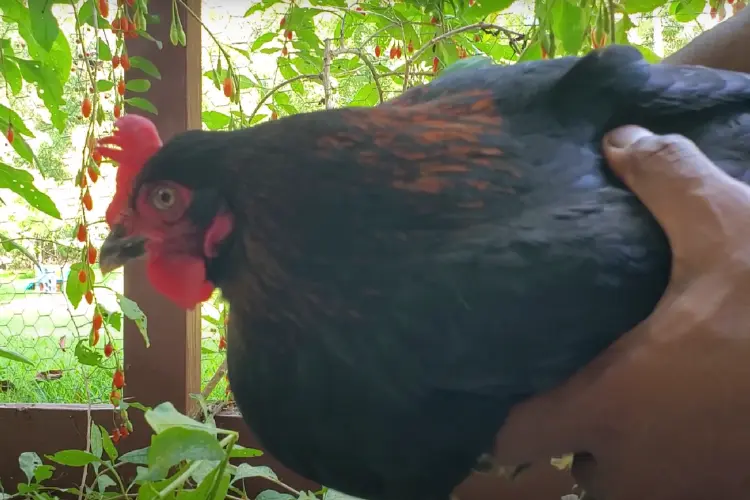
Temperament and Behavior
Black Copper Marans exhibit a calm and friendly temperament, making them well-suited for families and backyard chicken enthusiasts. They are docile and gentle birds, known for their easygoing nature and adaptability. With other chickens, Black Copper Marans, get along well with their flock mates and are generally non-aggressive towards humans and other chicken breeds.
They enjoy human interaction and are particularly suitable for handling and interacting with children. They have an adventurous spirit, displaying curiosity and active nature, making them excellent foragers and explorers. Additionally, they are known for their cleanliness, often keeping their nesting areas tidy.
Their docile, friendly, and sociable disposition, combined with their adaptability and curiosity, make these chickens a preferred choice for backyard chicken keeping and family-friendly environments.
Brodiness, Egg-laying and Egg Color
They are great for their excellent egg-laying ability, producing around 150-200 eggs annually. Black Copper Marans egg color is dark brown or chocolatey, and they have a reputation for laying some of the darkest eggs in the world, which are highly sought after. However, it’s important to note that the darkness of the Black Copper Marans eggs can vary, with hens that lay fewer eggs typically producing darker-colored eggs.
While Black Copper Marans are prolific layers, they do tend to go broody from time to time. When a hen goes broody, she becomes very protective of her eggs and may stop laying until she has hatched a clutch of chicks. This behavior is natural for many chicken breeds and is an instinctual drive to incubate and raise offspring.
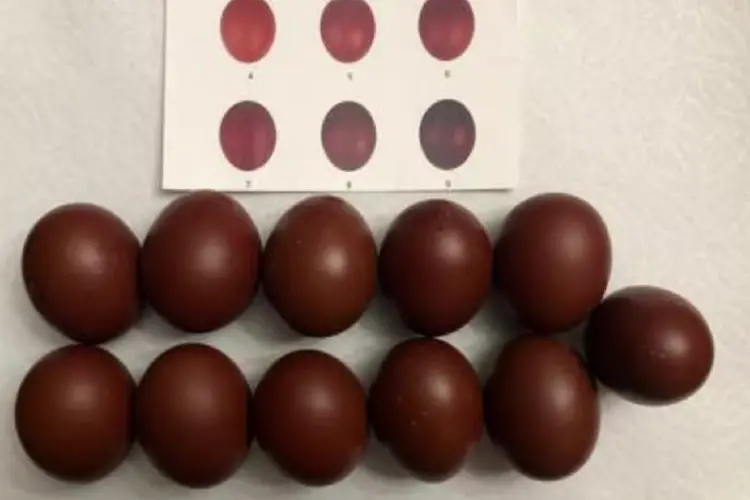
It’s important to consider the broodiness trait if you’re looking for consistent egg production. While broody hens can be wonderful for hatching Black Copper Marans chicks, they may temporarily halt egg production during this period.
Therefore, if you are primarily want in maximizing egg production, it can be beneficial to have a plan in place for managing broodiness, such as providing alternative methods for incubation or using artificial incubation methods.
What Are the Health Issues?
Black Copper Marans are great for their overall robust health and resilience. They are a hardy breed with good disease resistance. While no chicken breed is completely immune to health issues, Marans Black Copper has a reputation for being less susceptible to common poultry ailments.
Their hardiness are from their origins in swampy areas, where they have adapted to potentially challenging environmental conditions. Additionally, they have clean habits and an aversion to fecal matter, which can contribute to their lower risk of disease.
While they may still experience occasional health concerns common to all chicken breeds, such as respiratory infections, parasites, or egg-binding, these issues are not specific to this breed.
Regular health checks, proper nutrition, cleanliness, and preventive measures, such as deworming and vaccinations, can help minimize potential health risks.
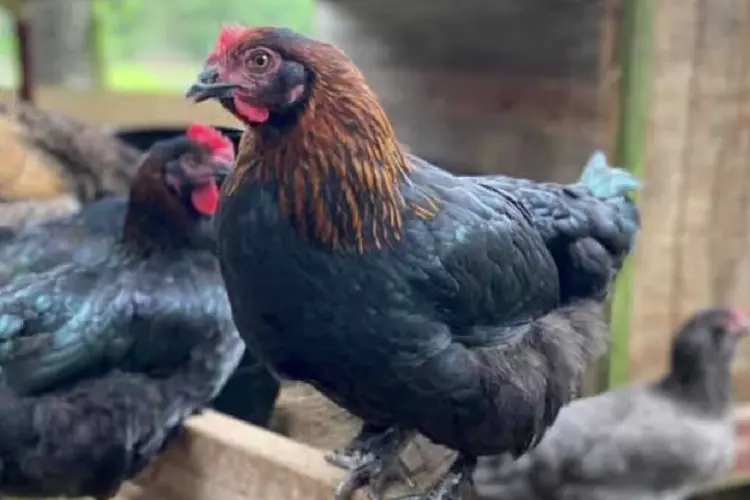
Why Are Black Copper Marans Expensive?
Black Copper Marans are expensive due to their rarity, unique qualities, and the demand for their distinct dark brown eggs. As a relatively uncommon breed, their limited availability drives up the price. The breeding process to maintain and improve desirable traits, such as egg color and plumage, requires careful selection and investment of time and resources. The market demand for their gourmet eggs and the specialty appeal of their appearance further contributes to their higher price.
If you are from Canada and planning to raise this kind of breed, you can check Breezy Bird Farms for Marans hatching egg
Quick Tips for Raising Black Copper Marans
- Since Black Copper Marans is a relatively new breed still being refined, it’s important to engage in selective breeding. Be mindful of the birds you choose for breeding to ensure desirable traits are passed on and to continue improving the breed.
- When buying, be cautious and don’t solely rely on photos of egg color. The color of marans eggs can change over time, so it’s best to consider other factors outlined in the breed standard to ensure you’re getting true Black Copper Marans.
- Marans chickens can gain excessive weight if kept in confinement without sufficient exercise. Ensure they have ample space to roam and forage, which helps maintain their overall health and well-being.
- Marans Black Copper grows quickly, so it’s essential to provide adequate space and accommodations right from the start. Don’t underestimate their growth rate when planning housing and coop size. Give them enough room to thrive comfortably as adults.
- Provide a balanced and nutritious diet to support the health and productivity of your Marans Black Copper. Ensure they can access quality chicken feed appropriate for their age and purpose, supplemented with fresh greens, grains, and occasional protein-rich treats.
- Conduct routine health checks to monitor the well-being of your Black Copper Maran. Look for signs of illness, parasites, or any abnormal behavior. Address any health concerns promptly and consult with a veterinarian if needed.
- Maintain good ventilation in the coop to ensure proper air circulation and prevent respiratory issues. Proper ventilation helps control humidity levels and minimizes the risk of damp conditions that could lead to respiratory infections.
- Create comfortable nesting boxes for your black copper marans chicken to lay their dark brown eggs. Ensure the nesting boxes are clean, secure, and filled with suitable bedding materials like straw or shavings.
- Adequate lighting plays a role in the egg-laying productivity of chickens. Provide a suitable lighting regimen, especially during winter, to stimulate consistent egg production.
Read also: What Should Be Inside a Chicken Coop Today – 10 Unseen Items
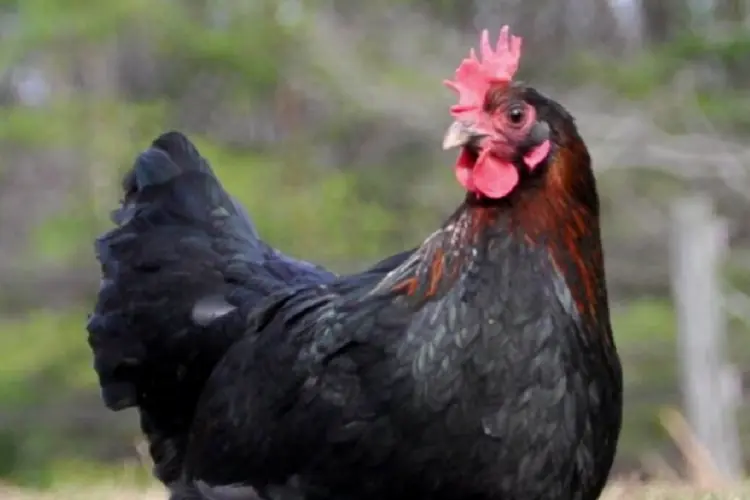
Breed Standard
The Black Copper Marans or the French Black Copper Marans breed standard, recognized by the American Poultry Association (APA), describes the distinctive features of this breed. It includes black and copper plumage, a large fowl size with black copper marans rooster weighing around eight pounds and hens around six to six and a half pounds, and a long, strong body shape.
The plumage should exhibit a green iridescence in sunlight, and the face, comb, wattles, and ear lobes should be red. Leg color can be slate or pink, with white soles and skin. The breed standard emphasizes clean-legged and sparsely feathered legs, and faults can include yellow shanks, white ear lobes, black eyes, incorrect coloring, and excessive leg feathering. Adherence to the breed standard ensures preserving the Black Copper Marans’ unique appearance and characteristics.
Conclusion
A detailed profile of this breed, Black Copper Marans, reveals a breed that combines striking beauty, exceptional egg-laying abilities, and a friendly temperament. With their black plumage adorned with copper feathers, this breed stands out in any flock.
Though they may be relatively rare and come at a higher cost, their unique qualities and characteristics make them a captivating and rewarding breed for chicken enthusiasts.

